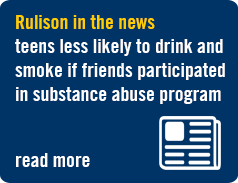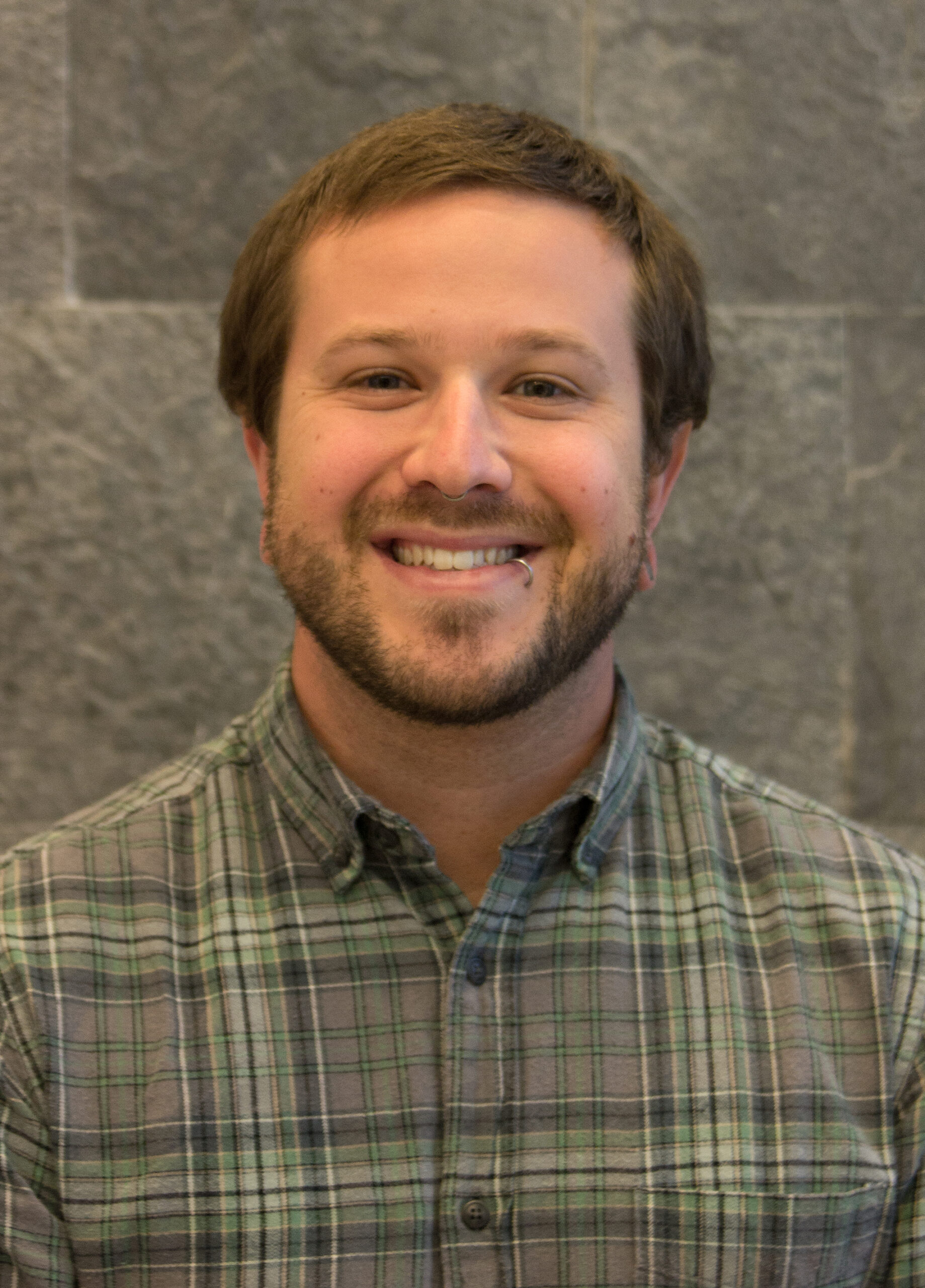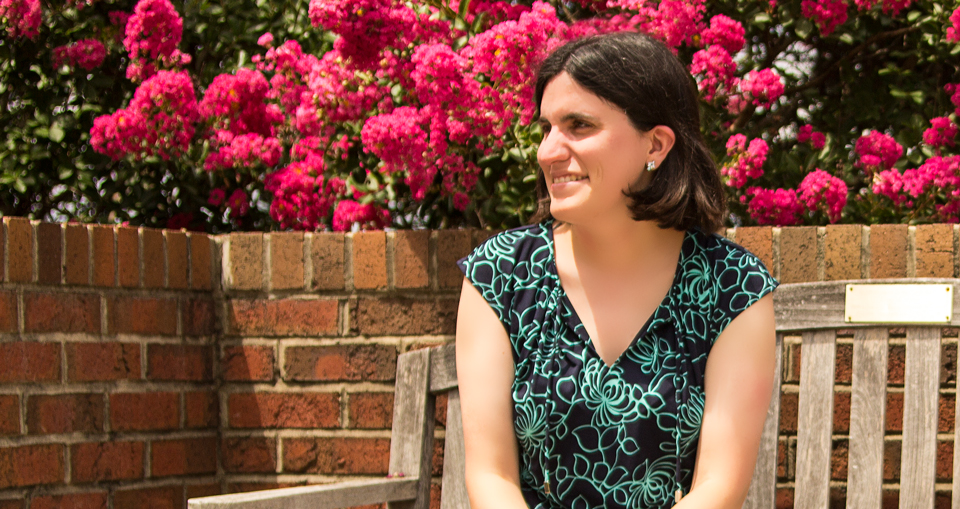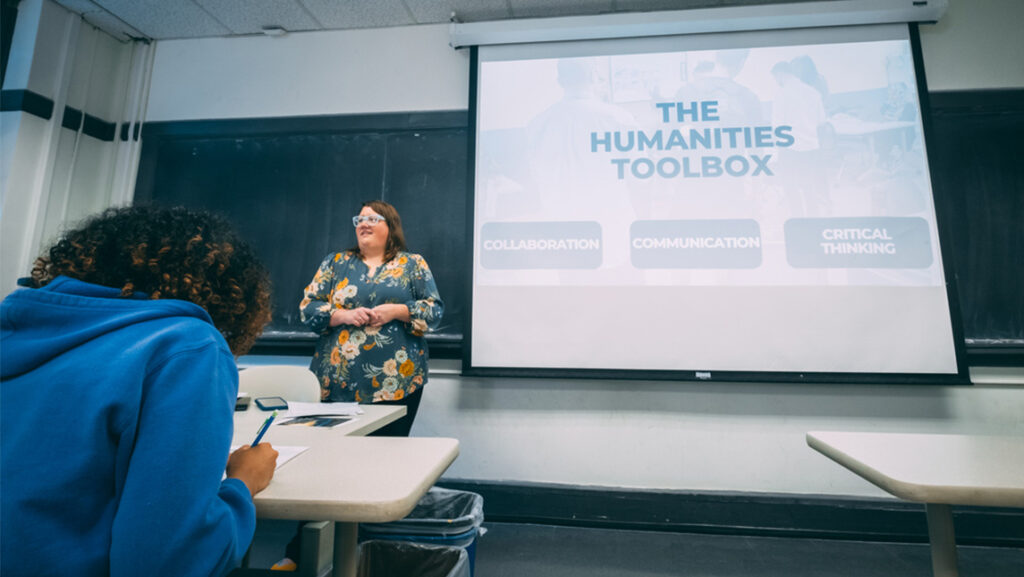Just Say No. Above the Influence. D.A.R.E. You’ve probably heard of these programs, all created to teach children about the dangers of substance abuse and aimed to reduce the rate of risky behaviors in adolescents. You may have even participated in a drug prevention campaign when you were in grade school. But did the program really make an impact on you?
Research suggests the answer is probably “no.” Since its creation in the 1980s, Drug Abuse Resistance Education (D.A.R.E.) has received millions of dollars in federal funding from the U.S. Department of Justice, the Drug Enforcement Administration, and the U.S. Department of Defense. However, a 1999 study entitled “Project DARE: No Effects at 10-Year Follow-Up” showed that despite the campaign’s best intentions, children who had gone through the program were no better off than those who had not. While we need to teach kids how to avoid risky behaviors, it’s clear we need a better approach.
That’s what Dr. Kelly Rulison is investigating. Specifically, she’s examining what role peers play in the development of substance abuse and how can this information be used in a program to discourage risky behavior in adolescents.
“A lot of my research focuses on trying to understand when peer influence occurs, what peers are most influential, and how kids end up in relationships with delinquent kids,” explains Rulison, an assistant professor in the Department of Public Health Education. These relationships can have a significant effect on substance abuse, delinquency, and other health risk behaviors, and are often more complex than they initially seem.
 “There is a lot of public press out there saying that peers are extremely influential, but what they’ve found when they’ve done interventions is that the direct peer pressure of someone saying ‘Come on, come on, try this cigarette,’ is really not the main influence that kids experience,” explains Rulison.
“There is a lot of public press out there saying that peers are extremely influential, but what they’ve found when they’ve done interventions is that the direct peer pressure of someone saying ‘Come on, come on, try this cigarette,’ is really not the main influence that kids experience,” explains Rulison.
“It is a lot more subtle than that.”
Studying and attempting to quantify this subtlety is no easy task. Much of Rulison’s research involves asking adolescents questions about both their own behavior and the perceived behavior of their peers — questions like “How much do you think [this person] drinks/smokes?” or “How much would your friends approve of your drinking?” It gets even trickier when researchers try to determine which members of the peer community have the most influence and how much that influence matters. Are kids selecting friends who then lead them to risky behaviors? Or are kids selecting friends based on their risky behaviors? While complex, doing this kind of research does have payoffs.
So far one of the most promising results has been in an area of specialization for Rulison — diffusion of intervention effects.
Intervention diffusion describes the positive benefits an individual can obtain from a prevention program, even if that individual never participated in or completed the curriculum. “Some past research has found that effects are not just on the families who participated, but on the whole school where the intervention occurred. And the idea is that it is probably spreading through the peer network,” says Rulison.
This means that if one student participated in the intervention program, but their friend did not, that friend could still be positively influenced through their peer relationship. Influencing a subsection of students can change social norms for the broader community of students.
“Trying to understand the process of how that diffusion occurs is the piece that I’m taking the lead on,” explains Rulison. Currently, she is involved in not one, but three different peer networking projects aimed at both collecting social network data and creating more productive interventions.
The first, PROSPER Peers, is a collaboration with Penn State University that Rulison has consulted on since graduate school. With funding from the National Institute for Drug Abuse, she is helping research the role of friendship networks in adolescent substance abuse. She also works in conjunction with the University of Rochester on the Above the Influence program, which incorporates the impact of “peer leaders” in its education programs.
Here at UNCG, Dr. Rulison collaborates with Dr. David Wyrick and Dr. Amanda Tanner in Public Health. They, along with Dr. Linda Collins from Pennsylvania State University’s Methodology Center, are engineering an online alcohol use and sexual risk behavior prevention program for first year college students. “The past ones have focused almost solely on alcohol abuse. Given that so much of the risky sexual behaviors happens within the context of alcohol, this intervention is really going to be focusing on that intersection,” says Rulison. Eventually, she wants to test whether students who participated in the program influence students who did not participate.
If the new program is effective, it could change the landscape of prevention programing for college students.
From grade school to college, peer relationships undeniably affect students’ engagement in risky behaviors. Peer influence and network research is an essential part of understanding these risky behaviors and reducing their prevalence. Researchers like Rulison help programs pinpoint what works and what doesn’t, creating more effective intervention programs nationwide.
 Article author Mary McLean is a Media and Communication Intern with the UNCG Office of Research and Economic Development. She researches and writes articles about the on and off campus impacts of UNCG research. Mary is a senior at UNCG, majoring in English and minoring in Media Studies. Her interest in journalism and communication led her to her current position.
Article author Mary McLean is a Media and Communication Intern with the UNCG Office of Research and Economic Development. She researches and writes articles about the on and off campus impacts of UNCG research. Mary is a senior at UNCG, majoring in English and minoring in Media Studies. Her interest in journalism and communication led her to her current position.



